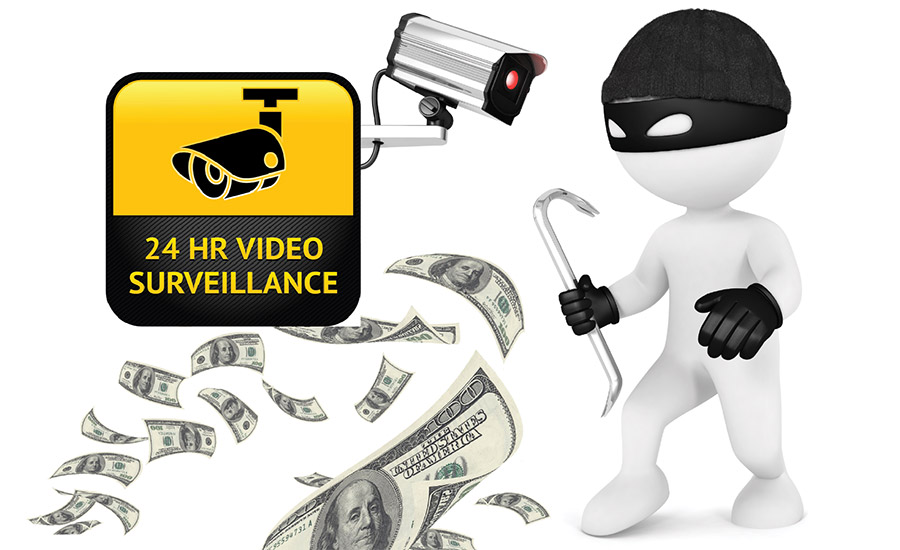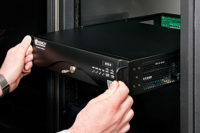RVM is an acronym that some security dealers and integrators know, but it causes others to look at you strangely when you mention it. RVM stands for Remote Video Monitoring. I believe that RVM is the new alarm monitoring, a service which really has not changed much in the last 30 years in North America.
RVM services are plenty and can be applied to many different physical and electronic security applications that will enable the security dealer/integrator to grow its business and not just rely on the same old alarm intrusion monthly monitoring. RVM services are not for every application but for those that are appropriate, they can make a great monthly profit and more than satisfy the customer’s wants and needs.
There are very many different ways to use RVM services. The security dealer can promote the use of remotely monitored HD surveillance through different security markets, including access control, intercom, and intrusion alarm.
The way to earn RMR is to come up with a game plan that you, the dealer or integrator, can take to the end user/customer. You are not selling equipment but a solution that will give the customer peace of mind. The best way to do this is to identify what the customer’s main concerns are and how to prevent such crimes from happening. Doing this will ensure your customer’s confidence in your company and reassure them that the monthly bill you are charging is spent wisely.
RVM services are the key to retaining RMR, and HD surveillance is the most prominent way to do that. Ideal applications will be for a high concentration of commercial and industrial sites where the business owner or manager does not want to deal with the property themselves. The dealer/integrator needs to identify the applications for a RVM solution. Once they do this, applying the idea to the end user becomes easy. Some of those applications are:
- construction sites;
- storage yards;
- city car lots;
- parking lots;
- isolated commercial warehouses;
- remote industrial sites;
- remote utilities infrastructure;
- retail stores;
- lone worker protection;
- loitering patrons;
- recreational property;
- car dealerships;
- virtual concierge;
- vending machines;
- oil and gas pipelines; and
- schools and universities.
RVM is a one-to-one ratio, meaning one HD surveillance camera to one speaker. This is the true way to identify who and what is at that specific location. Anything else is video verification, which is good but is a different application and does not prevent crimes. The reason is the bad guys sometimes know they are not being watched in real time and they assume it is a pre-recorded voice on a voice box.
Another method of video verification is real-time video: watching an event happen and calling the proper authorities. Both methods are under the RVM umbrella, but with latter method the event or crime is already in motion so prevention is not possible. A true RVM includes a video voice system (VVS), meaning the suspects are being watched in real time as the customer service operator (CSO) speaks down to tell them to leave the area (or whatever course of action is desired by the customer).
An example of this could be a car dealership that opens at 7:30 a.m. and closes at 7:00 p.m. Monday through Thursday. Recently, thieves have been breaking into cars to steal the navigational systems. On these particular days after closing, the owner wants anyone who comes by the lot on foot or by car and is on the property for more than two minutes to be spoken to and given a warning to leave the property or security will be dispatched. It could be something very simple, such as, “Good evening. Please leave the property as we are closed. Please come back tomorrow at 7:30 if you would like to talk to a salesperson.”
If the trespassers approach a vehicle as soon as they come onto the property, the CSO at the central monitoring station will speak down, stating that the local police are on their way and they are being viewed by live video monitoring. The CSO can even state that the trespasser’s license plate number and description of the car have been given to the local police. This information is not foolproof but it may curtail the thieves from stealing or damaging any property.
The main difference between video verification and VVS is the people know they are being watched and caught on HD surveillance because of the live “real time voice” coming from the CSO. It makes you realize that you are being watched in real time when an operator is picking out the colors of the hoodie you are wearing or the license plate of your vehicle.
These RVM solutions are also called blended solutions, where you have two or more different systems that are driving the system to do what you or your client wants it to do. Using analytics from the camera manufacturer or independently through video software, you can set up many areas that you need alarmed. For example, if it is a 24/7 operation such as a chemical plant and after 6 p.m. the automated gate is closed and any worker coming to the plant has to verify who they are by holding their company ID to the camera, this would be an access control application via remote video.
Another example is if the employee forgets his proximity card so now he or she has to press the entry phone station and a security guard who may not know the employee sees his or her face and runs a check on the software system to see if that person really is an employee. The guard verifies the person is who he or she says they are and opens the gate to let the employee in. In this application there is a guard on site at the plant; however, this scenario can be easily done at the command center or video monitoring station.
The accompanying table shows how you can price a RVM HD surveillance system. At the end of the day it is up to the dealer/integrator to identify the needs of its customers. RVM services are not for every application but the applications that they are for can be a recurring revenue windfall.
Your customer will be provided with real-time data be it video, access control, etc. and there are huge values that come with providing this type of service. There is no reason why you as the dealer/integrator cannot capitalize on RVM services. They are a win-win for both the customer and the dealer/integrator.





